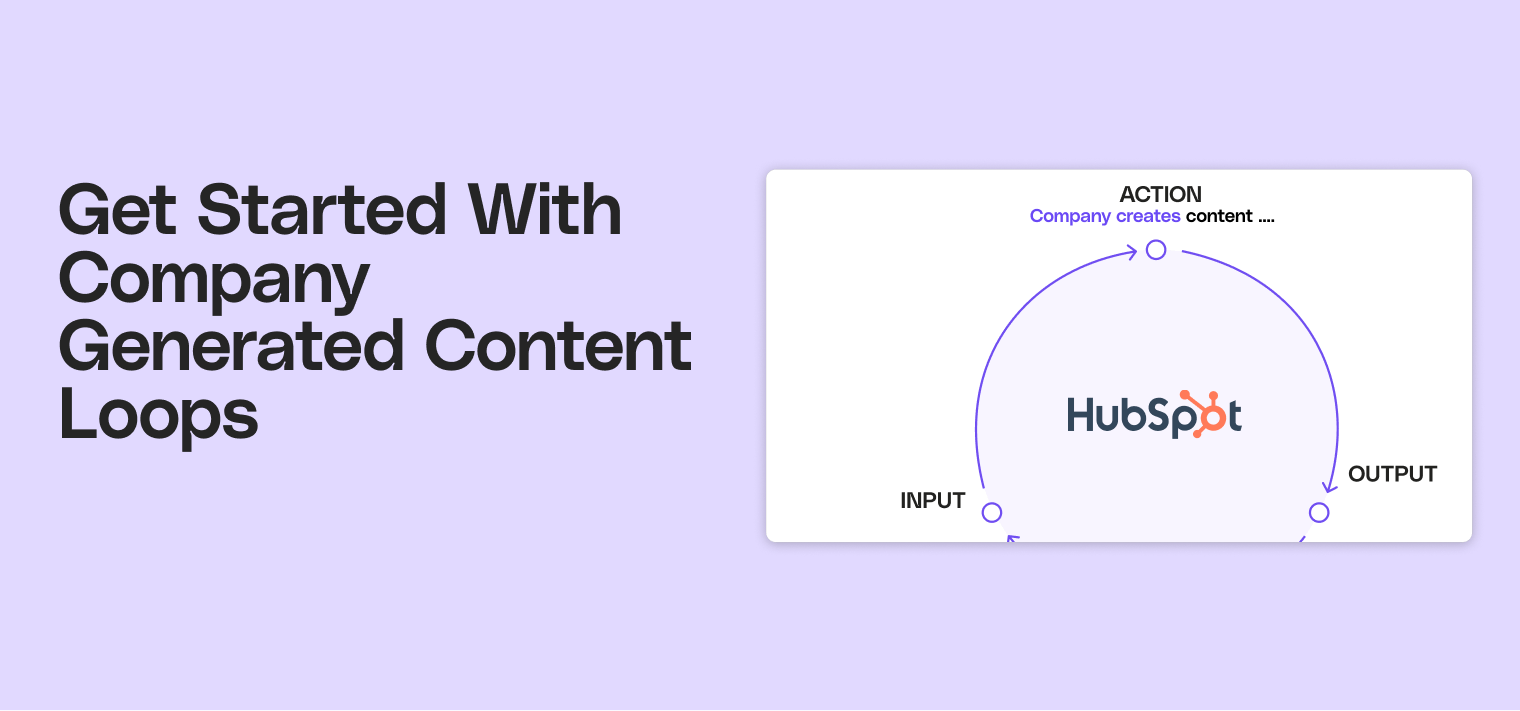- Understanding the basics of growth loops
- Key components of company-generated content loops
- Key benefits
- Creating a company-generated content loop
- Measuring the success of a company-generated content loop
- Challenges
- Optimizing and refining company-generated content loops
- Conclusion
- Unlock your SaaS growth potential with Cello
Growth and innovation are keywords nowadays. Operating in a fast-paced business landscape requires companies to seek innovative strategies to fuel sustainable growth.
As a result, company-generated content loops have gained significant attention. These loops, when effectively designed and executed, can act as powerful engines driving continuous growth and success for businesses.
In this article, we will delve into these company-generated content loops, uncover their key components, explore different types, discuss the process of creating them, and highlight the vital role of measuring and optimizing these loops.
| Key Element | Description | Optimization Tips |
|---|---|---|
| Understanding Growth Loops | Growth loops leverage resources for sustainable growth, encompassing actions that attract and retain customers, create value, and drive revenue. | Set objectives, understand the audience, map customer journey, design strategies, monitor and iterate. |
| Company-Generated Content (CGC) Loops | CGC loops involve creating content to attract new users, enhancing brand awareness, authority, and customer loyalty. | Regularly release valuable content, focus on SEO, and tailor content to target audience needs. |
| Key Components of CGC Loops | Include acquisition, output, and input stages, focusing on generating and distributing content to attract a wider audience. | Optimize each stage, ensure high-quality content, utilize multiple platforms for distribution. |
| Applications and Benefits | Examples include HubSpot and Typeform, which use CGC to support existing customers and attract new ones, leading to sustainable growth. | Regular content releases, outsource content production, collaborate with guest writers. |
| Measuring Success | Monitor KPIs like website traffic, SEO rankings, conversion rate, CLV, and churn rate to gauge loop effectiveness. | Analyze data regularly, optimize based on insights, conduct A/B testing. |
| Challenges and Optimization | Challenges include competition, resource constraints, and delayed returns. Continuous improvement and balancing value and volume are crucial. | Focus on high-quality content, experiment with different formats, leverage data analysis for continuous optimization. |
Understanding the basics of growth loops
Before we dive into the details, let's start by defining growth loops in the context of business. Growth loops can be seen as cyclical processes through which companies leverage their existing resources, networks, and customer base to generate sustainable growth.
These loops encompass a series of actions and interactions that attract and retain customers, create value for both the company and its stakeholders, and ultimately drive revenue and profitability.
At its core, a growth loop consists of interconnected stages that work together to create a continuous growth engine. These stages typically include customer acquisition, engagement, conversion, and retention.
By executing these stages in a cyclical manner, companies can create a self-reinforcing system that continually expands their customer base and drives revenue growth.
Defining company-generated content loops
These loops are also referred to as 'content marketing'. Content marketing is a strategic approach focused on creating and distributing valuable, relevant, and consistent content to attract and retain a clearly defined audience.
It aims to drive profitable customer actions by providing information that meets the needs and interests of potential customers. This method helps build brand awareness, establish authority, and foster trust with the target audience, ultimately leading to increased sales and customer loyalty.
Content marketing can include blog posts, videos, social media posts, infographics, podcasts, and more. It can also play an influential role in SEO, boosting the rankings of the company generating the material.
Key components of company-generated content loops
But how do these loops work? It is important to note that growth loops are self-reinforcing. Each new user should facilitate the acquisition of new ones, ultimately leading to consistently positive growth. There are several key elements making up CGC loops.
The basics
- Acquisition: This stage focuses on attracting new customers to the company's product or service. In CGC loops, it involves generating content to drive potential customers to the company's website. Ideally, this leads to new users signing up.
- Output: Once the user has signed up and spent some money on the good or service, the company creates content using the revenue generated from the signup.
- Input: After generating the content, the company then distributes it on a variety of platforms and search engines to attract a wider audience, leading to new signups.
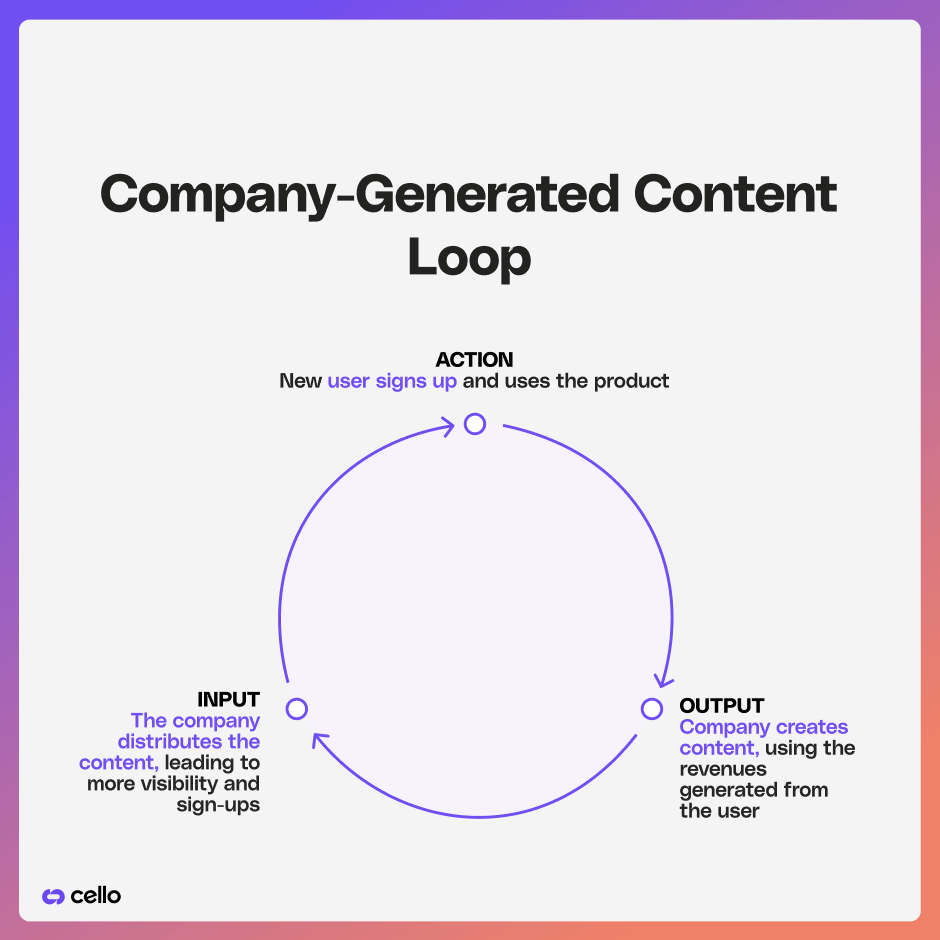
Primary value promise, value generator, and value distributor
We have previously considered different types of value promise in our piece on incentivized viral loops, namely intrinsic, extrinsic, and social. Value promises refer to the incentives that drive different player's decisions, in this case the motivation behind generating and sharing content pieces.

As a reminder, these value promises work this way:
- Intrinsic: Intrinsic value promises occur when a party receives personal utility from a product, service, or action.
- Extrinsic: Extrinsic value promises are usually related to monetary gains of a certain party.
- Social: Social value promises normally relate to social recognition and status gains of a party.
Moreover, we have differentiated between two parties: the value generator and the value distributor, respectively being who creates the good or service, and who distributes it.
In CGC loops, both the value generator and the value distributor is the company. In both cases, there is a strong financial value promise, as creating content helps attract more new leads, and sharing it increases the amount of potential leads that are exposed to the company.
Applications
While common in the SaaS sphere, notable examples of CGC loops include HubSpot and Typeform, which regularly release content on their 'Resources' pages to both support existing customers and attract new ones. As this leads to more sign-ups, the companies generate additional revenue, which then partially funds more content generation.
Frequently releasing content can also help create more touch points with potential customers. Regularly seeing articles published by a brand will subconsciously place it at the front of readers' minds, which may incentivize them to then purchase the product if they need what the company is offering.
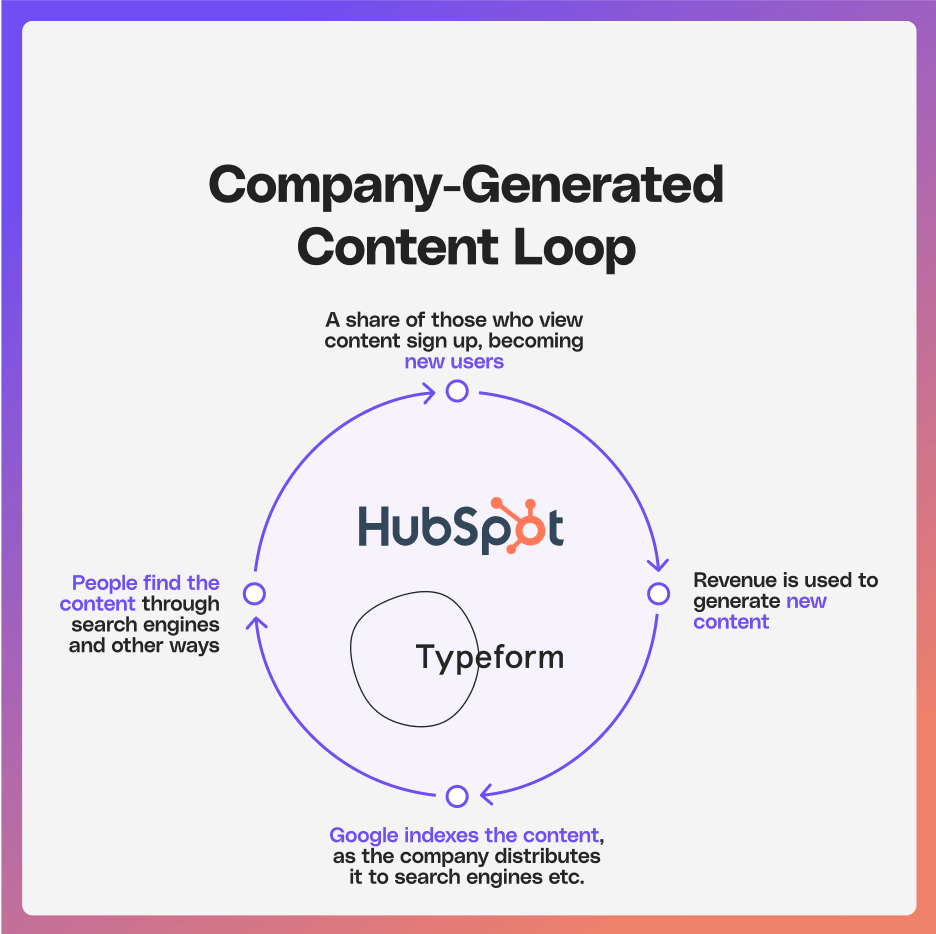
Company-generated content loops can work harmoniously with sales loops, as sales reps are hired to work with and convert potential leads drawn in from the generated content.
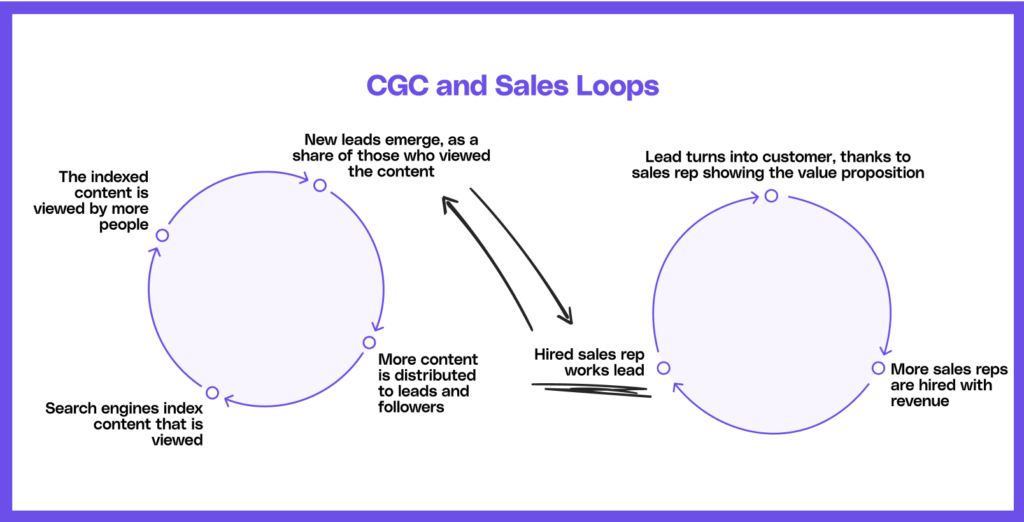
Key benefits
CGC growth loops have several advantages:
Cumulative returns
While it takes a while to get a CGC loop started, as content pieces start reaching a wider audience and rising in search rankings, they start to produce good returns. This effect compounds the more high-quality content pieces a company releases. As such, a great SEO tactic to generate CGC loops is producing a variety of content pieces, slowly but surely building a higher domain rating and attracting more viewers, which hopefully convert to customers.
Educating readers
Content pieces can have significant educational value, explaining to viewers more nuanced aspects of a company's industry, while also showing how the company's products fit into the broader picture.
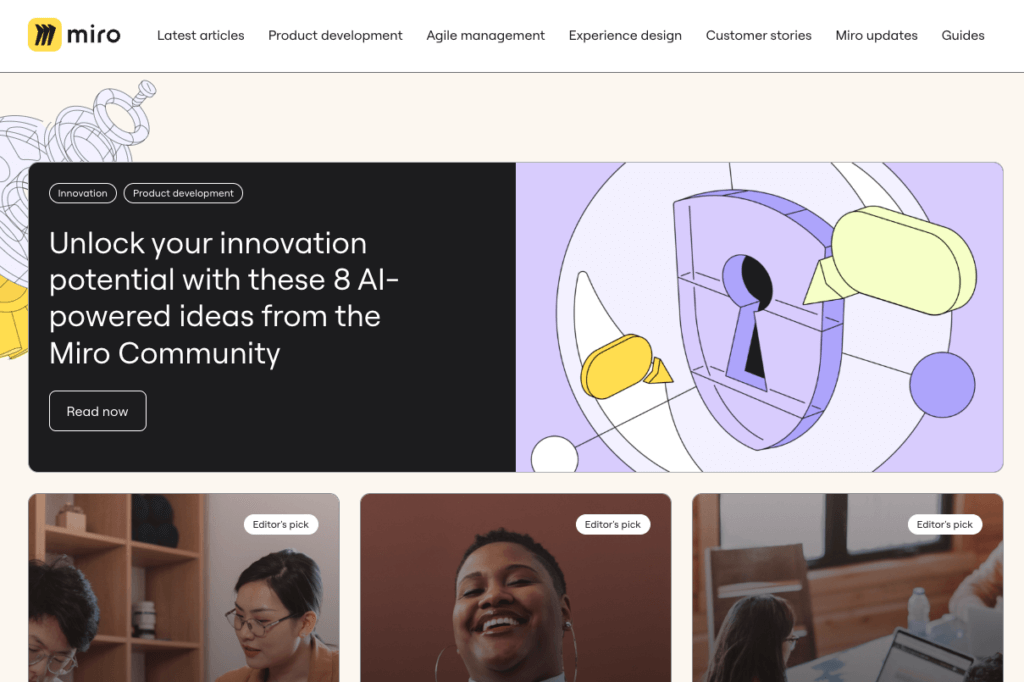
(Source: Miro)
Easily outsource
It can be time-consuming to internally produce high-quality content pieces. Fortunately, there are thousands of freelancers across a variety of industries dedicated to producing content pieces; identifying the right ones can scale your content production, driving more traffic and leading to new leads. Moreover, inviting guest writers and doing collaboration posts are great ways of expanding content production.
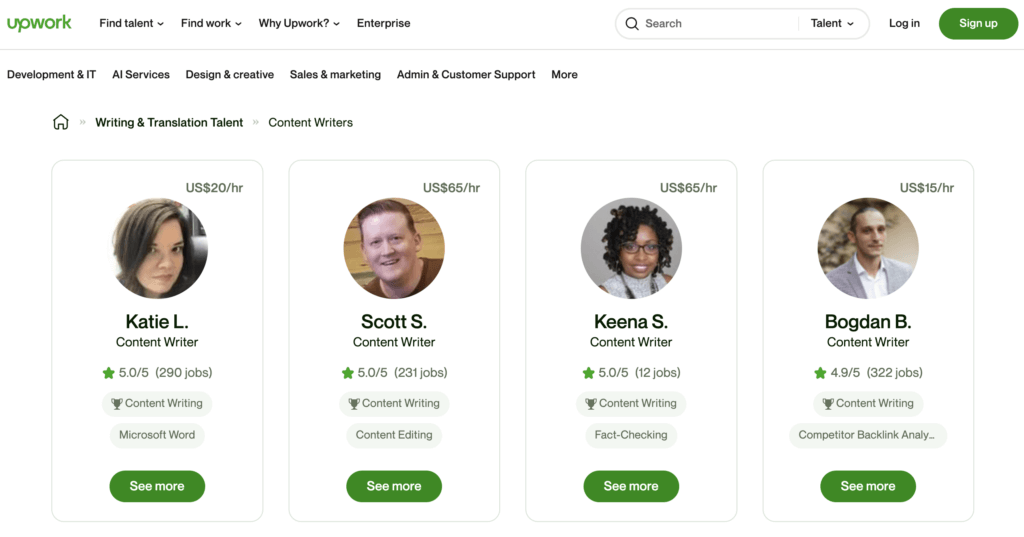
(Source: Upwork)
Sustainable growth
By strategically activating and combining growth loops, companies can consistently attract new leads and conversions, helping achieve sustainable growth and profitability over time.
Creating a company-generated content loop
As the value of CGC loops becomes increasingly evident, companies are actively seeking ways to build these up. Let's explore the process of designing an effective CGC loop.
Steps to designing an effective company-generated content loop
The process of creating a company-generated content loop involves several key steps:

Define objectives
Clearly articulate the growth objectives the company aims to achieve using the growth loop. This could include specific revenue targets, customer acquisition goals, or market share aspirations.
Identify target audience
Understand the characteristics, needs, and preferences of the target audience the growth loop will focus on. This enables precise targeting and customization of strategies to resonate with the intended audience. In most cases, the target audience will mirror your ideal customer profile and similar users that may be interested in consuming your content, and could later benefit from your product.
Map customer journey
Analyze the journey customers undertake from the initial touchpoint with the company to becoming loyal customers. Identify the key touchpoints, pain points, and opportunities for engagement throughout this journey. For CGC loops, these are likely to be exposure to your content - ensure that there are sufficient CTAs throughout your articles to improve conversion rates. Moreover, it is useful to understand from where your readers are landing on your articles. Is it exclusively search engines, or also social median and other channels? Invest to improve your visibility in your top channels.
Design content calendars
Decide which content will be relevant for your audience, and what will help your company establish itself as a thought leader in your industry. Make a content calendar, planning when, where, and which articles you will publish. Ensure you have sufficient resources for this; if not, consider outsourcing content production to freelancers, working with guest writers, or writing collaboration posts. Make sure you only partner with credible and skilled authors.
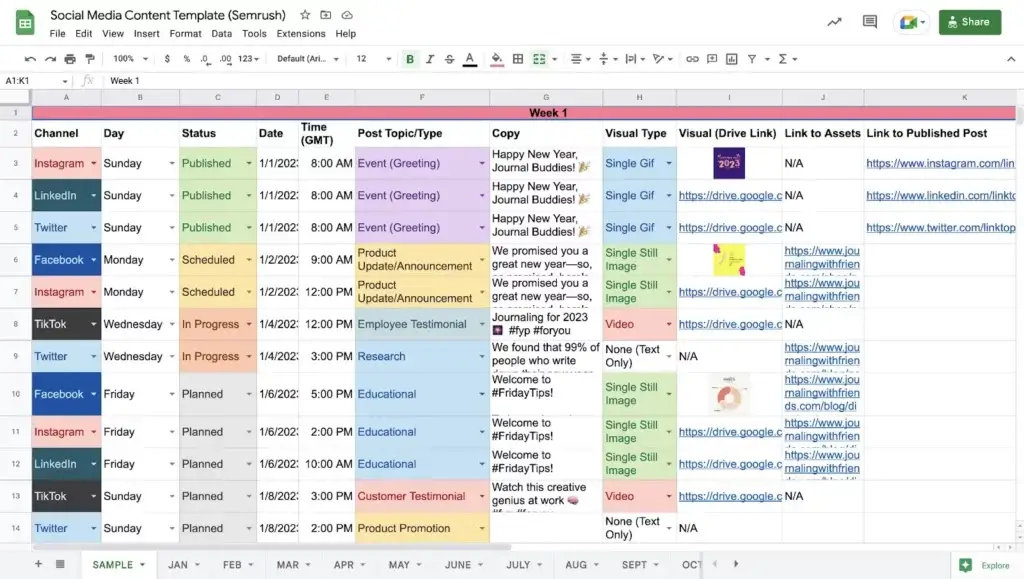
(Source: Semrush)
Implement, monitor, and iterate
Execute the designed content calendar, closely monitoring their performance and utilizing data-driven insights to make informed improvements. It helps to monitor performance of your social media posts, index your articles on search engines, and ask new sign-ups to inform you how they found your product. By analysing this data, you can optimize the CGC loop.
By following these steps, companies can lay a solid foundation for their growth loop, setting themselves up for success in achieving sustainable growth.
Measuring the success of a company-generated content loop
Once a CGC loop is implemented, it is essential to measure its performance to gauge its effectiveness and identify areas for improvement.
Measuring the success of a growth loop involves more than just implementing a few metrics. It requires a comprehensive understanding of the key performance indicators (KPIs) that align with the company's objectives and reflect the stages of the growth loop.
Key performance indicators for CGC loops
When measuring the success of a growth loop, companies can consider several key performance indicators (KPIs) that align with their objectives and reflect the stages of the growth loop. These KPIs act as compasses, guiding companies towards growth and success.
Below is an overview of relevant KPIs to include.
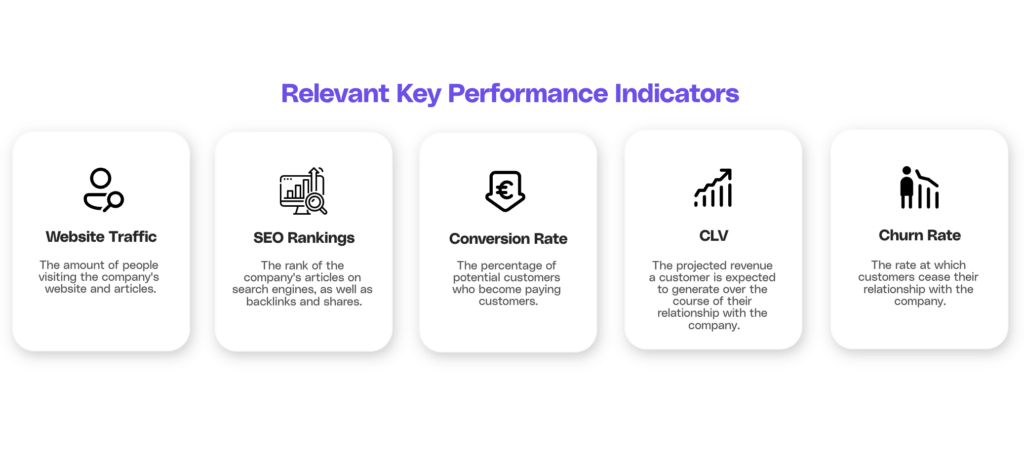
Website traffic
High-quality content pieces should lead to higher traffic on a company's website, as a larger audience reads through the articles. It also helps to monitor time spent on each page, scroll depth, and (if applicable) any comments and likes left.
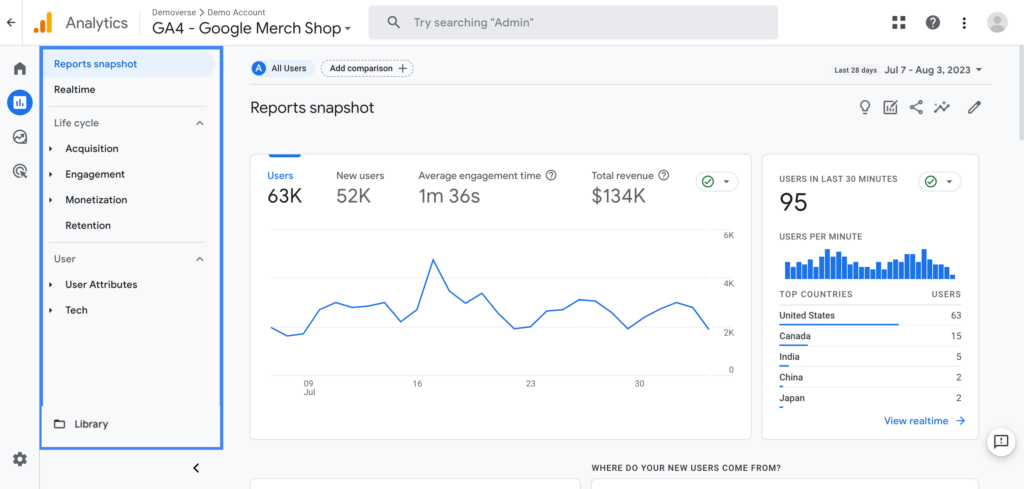
(Source: Google Help)
The percentage of potential customers (in this case, primarily those who consume content) who become paying customers. A high conversion rate indicates effective engagement and content.
By focusing on improving the conversion rate, companies can enhance their sales funnel and maximize their revenue potential.
For CGC loops, it helps to look specifically at the open & click-through rates, return customers, as well as the number of leads and transaction amounts.

SEO rankings
Using tools such as Ahrefs can help companies track the performance of their website, as well as specific articles. As the top 3 links on search results are the most visited ones, companies should focus on reaching that ranking on as many articles as possible. Overall shares and backlinks to your website are also a useful metric to track.

(Source: Ahrefs)
Customer lifetime value (CLV)
The projected revenue a customer is expected to generate over the course of their relationship with the company. Higher CLV signifies successful retention strategies.
By increasing the CLV of leads coming from CGC loops, companies can not only boost their revenue but also foster long-term customer loyalty.

The rate at which customers cease their relationship with the company. A low churn rate indicates a higher level of customer loyalty and satisfaction. By reducing the churn rate, companies can retain their existing customers and minimize revenue loss.

Challenges
While any company can generate content, activating these growth loops can be challenging. There are several reasons for this:
Competition
There is a vast amount of content being published on a daily basis - this makes it difficult to top search rankings, as companies need to develop their SEO abilities and stand out from their competitors.
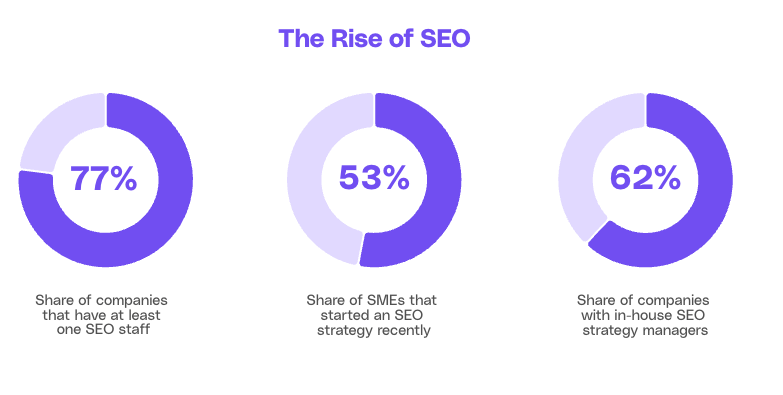
Resources
To stand out from competitors, it is essential to produce high-quality content pieces. However, producing appealing content with original insights requires a large amount of time and resources, which not every company can afford, particularly in earlier stages.
Delayed returns
Content pieces tend to have very limited impact on the outset. Only over time, as they reach a wider audience and rise in search rankings, their returns start to improve.
The value/volume dilemma
Another challenge to consider more in-depth are the risks involved with choosing the quantity of content to release, as CGC loops require a certain amount of content pieces to properly kick off.
Releasing insufficient articles can be an issue, but similarly, companies should avoid releasing excessive content in short time periods, due to risks of compromising on quality by prioritizing volume.
This is what happened after ChatGPT's release, when several companies started mass-producing low-quality content, and were then penalised by search engines.
Even if this was not the case, viewers have a limit on how much content they will consume, due to time constraints, and as such the marginal value of numerous content pieces may fall.
As such, companies should strike a balance between value and volume - as long as value and volume are high, CGC loops will work. Once volume or value drop, though, it is difficult to start the loop, respectively because there is insufficient content, or because the content that exists does not bring new leads. This rationale can be summarised in the table below.

Solving the value/volume dilemma
A common strategy to minimize the value/volume dilemma is to outsource some of the content production to writers outside of the firm. Many companies do one or more of the following:
| Element | Explanation | Example | How to Optimize |
|---|---|---|---|
| Collaboration posts | Posts created jointly with other creators or brands, combining efforts and audiences. | Growth Loops Accelerants for PLG SaaS - Wes Bush | Identify partners with complementary audiences, create engaging content that leverages both brands' strengths, and promote the posts across all relevant channels. |
| Inviting guest writers | Having external experts or influencers contribute content to your platform. | Complete Guide to your B2B Referral Program - Kyle Poyar | Select guest writers with a strong following and relevant expertise, provide clear guidelines and expectations, and promote their contributions to expand reach. |
| Hiring freelancers | Engaging independent professionals to produce content or manage specific tasks. | B2B Referral Program Examples - Matteo Tittarelli | Choose freelancers with proven track records, clearly define project scopes and deadlines, and maintain regular communication to ensure quality and alignment with your brand. |
The better these external parties understand your product vertical, the likelier your content is to be of high quality. It helps when such writers have a similar target audience, as this can further drive new leads.
In other cases, companies simply shift the content generation to users. This then creates user-generated content growth loops, which we will explore in another article.
Deciding the primary value promise
One additional challenge companies should consider when releasing content is what the primary value purpose of this should be. Let's return to our earlier example, Typeform.
While Typeform is a software to create surveys, their content does not only focus on what similar tools of this kind exist and on what exactly Typeform can do.
Rather, it attempts to educate readers about how to create effective and attractive surveys, aiming to show people how to increase engagement in what had previously felt like a saturated market.

(Source: Typeform)
While the content focuses on teaching readers how to improve their surveys and forms, Typeform cleverly integrates some of its features and offerings into its articles, thereby influencing customers' decisions - if they ever want to create surveys, they will be tempted to try out Typeform!
Hence, while there is an element of self-promotion, Typeform's content does not only focus on driving sales, but primarily attempts to improve its readers understanding of forms and surveys.
Optimizing and refining company-generated content loops
Optimization and refinement are integral aspects of growth loops. Successful companies continuously analyze the performance of their growth loops and employ strategies to maximize their impact.
Strategies for CGC loop optimization
To optimize a CGC loop, companies can consider various strategies:
Content creation
Ensure you properly understand your audience, and if expanding into new areas, create content tailored to all of your users. Moreover, experiment with different formats (e.g. blogs, videos, short-form articles, social media posts, podcasts etc.) and, if outsourcing, different freelancers and guest writers, to find what works best for your business.
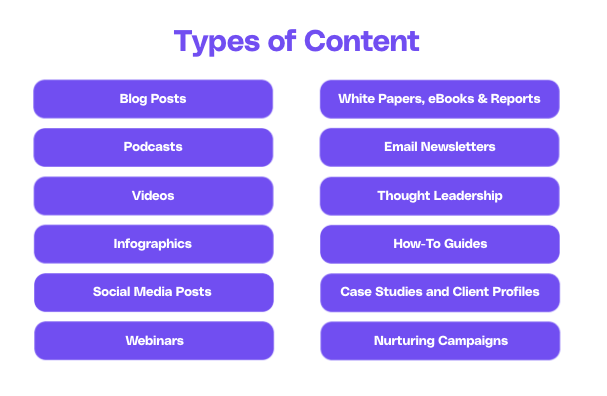
Content distribution
Try distributing your content on a variety of channels, to better comprehend which ones drive the most traffic and leads. Try experimenting with SEO tools and paid advertising to see how this affects your performance.
User engagement and interactions
If posting on social media, it helps to ask readers for their opinions, through polls or questions, as this will drive engagement. Make sure to respond to comments, and consider rewarding users for their engagement with exclusive content or offerings.
Data analysis
Keep tracking the metrics discussed above, conducting A/B tests on which channels and formats work best. Using tools such as Hotjar to track user interactions and behaviours can also enlighten you on what content works best.

The role of continuous improvement
Continuous improvement is crucial to maintaining the effectiveness of a CGC loop. Companies should make it a priority to foster a culture of learning, experimentation, and adaptation. By encouraging cross-functional collaboration, soliciting feedback from customers, and staying attuned to market trends, companies can continuously refine strategies, identify new growth opportunities, and adapt to evolving customer needs.
Conclusion
By now, you have gained a comprehensive understanding of company-generated content loops. These powerful engines of growth can enable businesses to leverage their resources, engage customers, drive revenue, and adapt to changing market dynamics. As you explore ways to fuel sustainable growth, consider incorporating growth loops into your business strategy and reaping the benefits they offer. Embrace the iterative nature of CGC loops, remain vigilant to challenges, and continually measure, optimize, and refine your growth engine for long-term success.
Unlock your SaaS growth potential with Cello
Ready to transform your users into a dynamic force for your SaaS product's growth? With Cello, you can effortlessly integrate a peer-to-peer referral program that turns your user base into your most powerful marketing channel. Experience the simplicity of adding a referral program that not only enhances user experience but also drives your viral growth. Witness firsthand how Cello's seamless integration, automated rewards, and real-time performance tracking can elevate your growth strategy. Don't miss out on the opportunity to see how a minimal development time and a success-based pricing model can revolutionize your growth loops. Book a demo today and see Cello in action, where sharing becomes the backbone of your business growth.
Resources
Related Articles

Complete Guide to Sales Growth Loops
Discover the power of sales growth loops and how they drive business success.

Complete Guide to your B2B Referral Program
Want to get started with B2B referrals? Check out our complete guide to your B2B referral ...

The 4 Referral Program Categories for B2B SaaS (2025 Guide + Examples)
Learn how to get started with referral programs for B2B SaaS. Understand what type of referral ...
